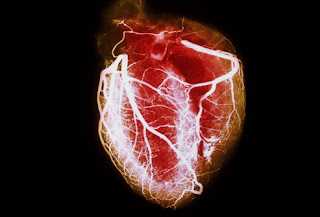The Aftermath of a Heart Attack
A heart attack is a life-threatening medical condition in which the blood flowing to the heart suddenly stops. Damage to surrounding tissues occurs immediately. Surviving a heart attack ultimately depends on the severity of the condition, as well as how quickly it is treated.
You will need to be treated for coronary heart disease after you survive a heart attack. Adherence to the correct form of treatment may help prevent future heart attacks. The thought of another heart attack is a frightening prospect. Knowing what to do after surviving one can significantly reduce the odds of suffering from another attack.
You will need to be treated for coronary heart disease after you survive a heart attack. Adherence to the correct form of treatment may help prevent future heart attacks. The thought of another heart attack is a frightening prospect. Knowing what to do after surviving one can significantly reduce the odds of suffering from another attack.
Life After a Heart Attack
Many people survive heart attacks and live active, full lives. If you get help quickly, treatment can limit damage to your heart muscle. Less heart damage improves your chances for a better quality of life after a heart attack.
Makeover Your Lifestyle
A heart-healthy lifestyle can complement a medical treatment plan for heart disease. Consider your current lifestyle habits and look for ways you might improve them.
Exercise
As long as your doctor gives you the go-ahead, you may begin an exercise program after you have recovered from a heart attack. Regular exercise is certainly important for weight maintenance, but it also works your muscles — the most important muscle being your heart. Any form of exercise that gets your blood pumping is beneficial. When it comes to heart health, however, aerobic exercise is best. Examples include:
- swimming
- bicycling
- jogging or running
walking at a moderate to brisk pace
These forms of exercise help increase the amount of oxygen in your body and also strengthen the heart’s ability to pump it through the bloodstream to the rest of your body. As an added bonus, regular aerobic exercise also helps reduce hypertension, stress, and cholesterol.
If you notice any unusual symptoms during exercise, such as prolonged shortness of breath, weak limbs, or chest pain, stop right away and call 911.
These forms of exercise help increase the amount of oxygen in your body and also strengthen the heart’s ability to pump it through the bloodstream to the rest of your body. As an added bonus, regular aerobic exercise also helps reduce hypertension, stress, and cholesterol.
If you notice any unusual symptoms during exercise, such as prolonged shortness of breath, weak limbs, or chest pain, stop right away and call 911.
Eat Right
A low-fat, low-calorie diet has been proven to help prevent the risk for a heart attack. However, if you have already had a heart attack, eating right is simply a must to prevent future occurrences. Avoid trans fats and saturated fats whenever possible. These fats directly contribute to plaque formation in the arteries. When your arteries become clogged, blood can no longer flow to the heart, resulting in a heart attack.
Eating too many calories and being overweight can also strain your heart. Controlling your weight and eating a balance of plant foods, lean meats, and low-fat dairy products can help. Avoid animal fats. Instead, eat fats that come from plant sources, such as olive oil or nuts.
Returning to Normal Activities
After a heart attack, most people who don't have chest pain or discomfort or other problems can safely return to most of their normal activities within a few weeks. Most can begin walking right away.
Sexual activity also can begin within a few weeks for most patients. Talk with your doctor about a safe schedule for returning to your normal routine.
If allowed by State law, driving usually can begin within a week for most patients who don't have chest pain or discomfort or other problems. Each State has rules about driving a motor vehicle following a serious illness. People who have complications shouldn't drive until their symptoms have been stable for a few weeks.
Risk of a Repeat Heart Attack
Once you've had a heart attack, you're at higher risk for another one. Knowing the difference between angina and a heart attack is important. Angina is chest pain that occurs in people who have CHD.
The pain from angina usually occurs after physical exertion and goes away in a few minutes when you rest or take medicine as directed.
The pain from a heart attack usually is more severe than the pain from angina. Heart attack pain doesn't go away when you rest or take medicine.
If you don't know whether your chest pain is angina or a heart attack, call 9–1–1.
The symptoms of a second heart attack may not be the same as those of a first heart attack. Don't take a chance if you're in doubt. Always call 9–1–1 right away if you or someone else has heart attack symptoms.
Unfortunately, most heart attack victims wait 2 hours or more after their symptoms start before they seek medical help. This delay can result in lasting heart damage or death.







0 comments:
Post a Comment